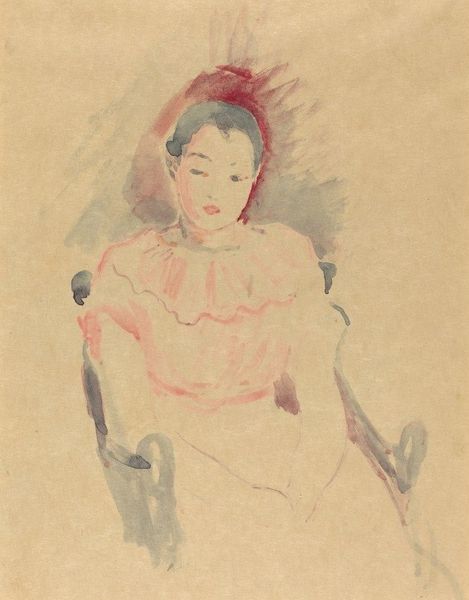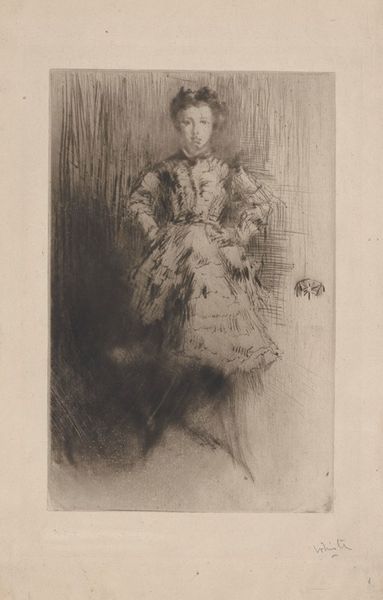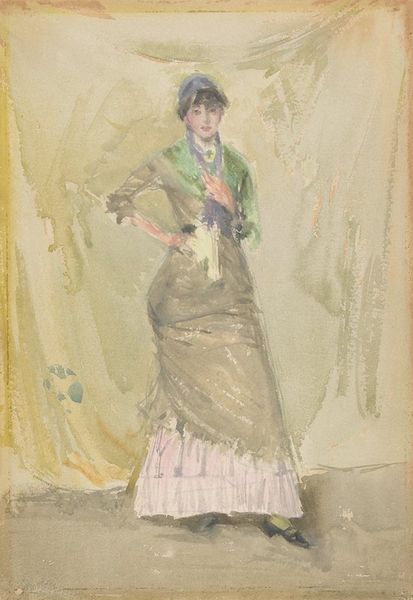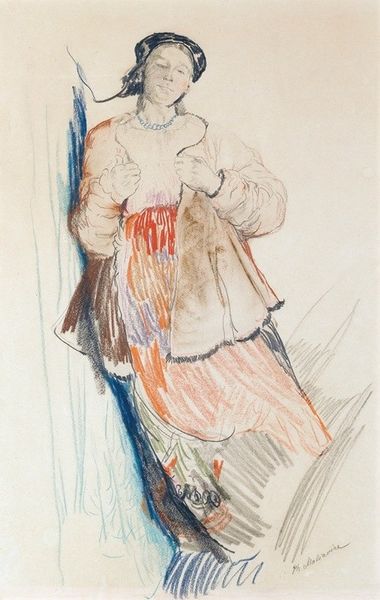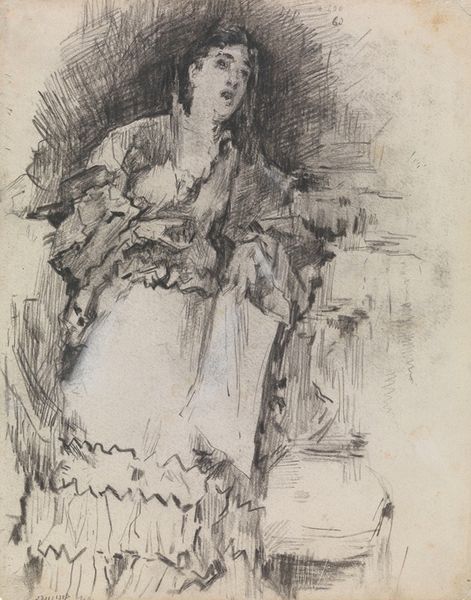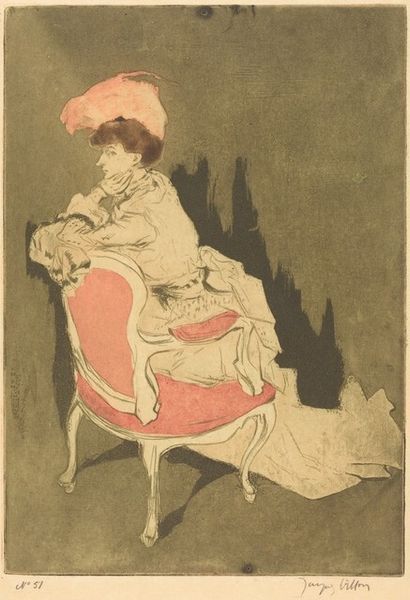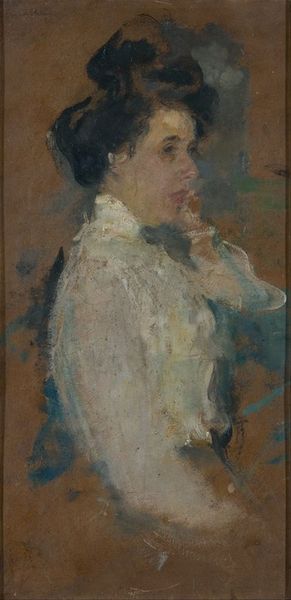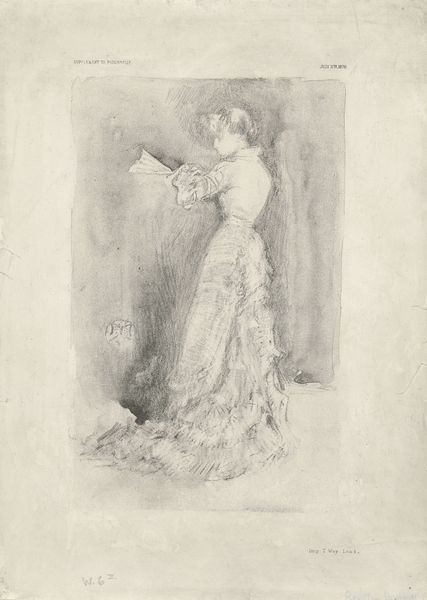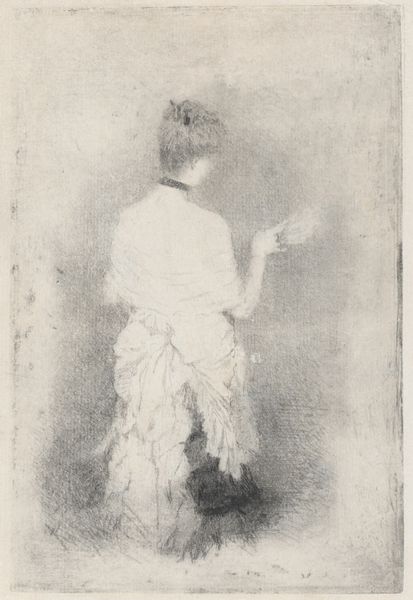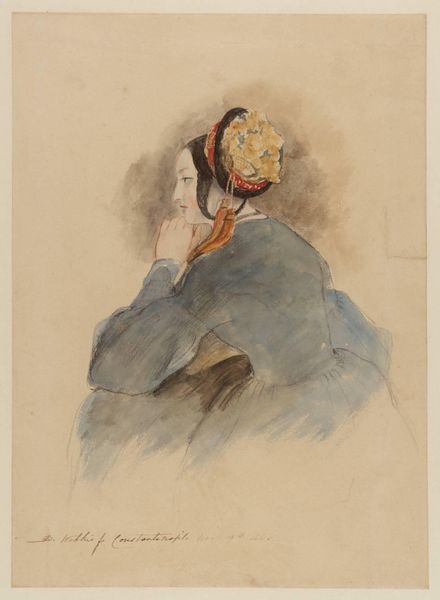
Copyright: Public Domain: Artvee
Curator: Let's turn our attention to "Elsa, Dite La Viennoise", a lithograph created by Henri de Toulouse-Lautrec in 1897. It’s a striking image, isn’t it? Editor: Indeed! My initial reaction is drawn to the sitter's confident gaze, juxtaposed with the ephemeral, almost ghostly quality of the lithographic lines. It feels both intimate and detached. Curator: The use of lithography here is masterful. It allowed Lautrec to achieve these subtle gradations and textures. We can see how the materials themselves—the stone, the inks, the paper—contribute to this overall impression. Look at the paper; it's got a life of its own. Editor: Precisely. The fur stole dominating the composition immediately tells a story of luxury and perhaps vulnerability. Notice how the fur frames the face, drawing our eyes to Elsa’s direct stare, suggesting a worldliness acquired by traversing the stages of life. What symbolic meaning might her stare suggest in her era? Curator: Good point about the materiality contributing to vulnerability—consider how these stoles were crafted, from skinning the animal to processing and dyeing the pelt and finally being fabricated into a garment by garment workers. A whole unseen industry underpins her fashionable pose. The means of production are so distant, yet they ultimately support the veneer of glamour. Editor: True! But what about the emotional effect on the viewer? I see a distinct echo of Venus, emerged fully formed, in her self-possession. The stark background forces us into an immediate relationship. A challenge? An invitation? A silent confidence? Curator: Or perhaps an indifference afforded by her social status. Consider the social dynamics: Lautrec immortalizes her, making her beauty and status commodities. We the audience participate in the culture of spectacle and class display even as we contemplate the artwork a century later. Editor: Yes, an ambivalent perspective makes complete sense! The more I engage with her imagery and aura, the more complex her statement becomes. Thank you. Curator: Absolutely. Thinking about the unseen hands involved, the context of labor, certainly casts this artwork in a new light for me too.
Comments
No comments
Be the first to comment and join the conversation on the ultimate creative platform.
